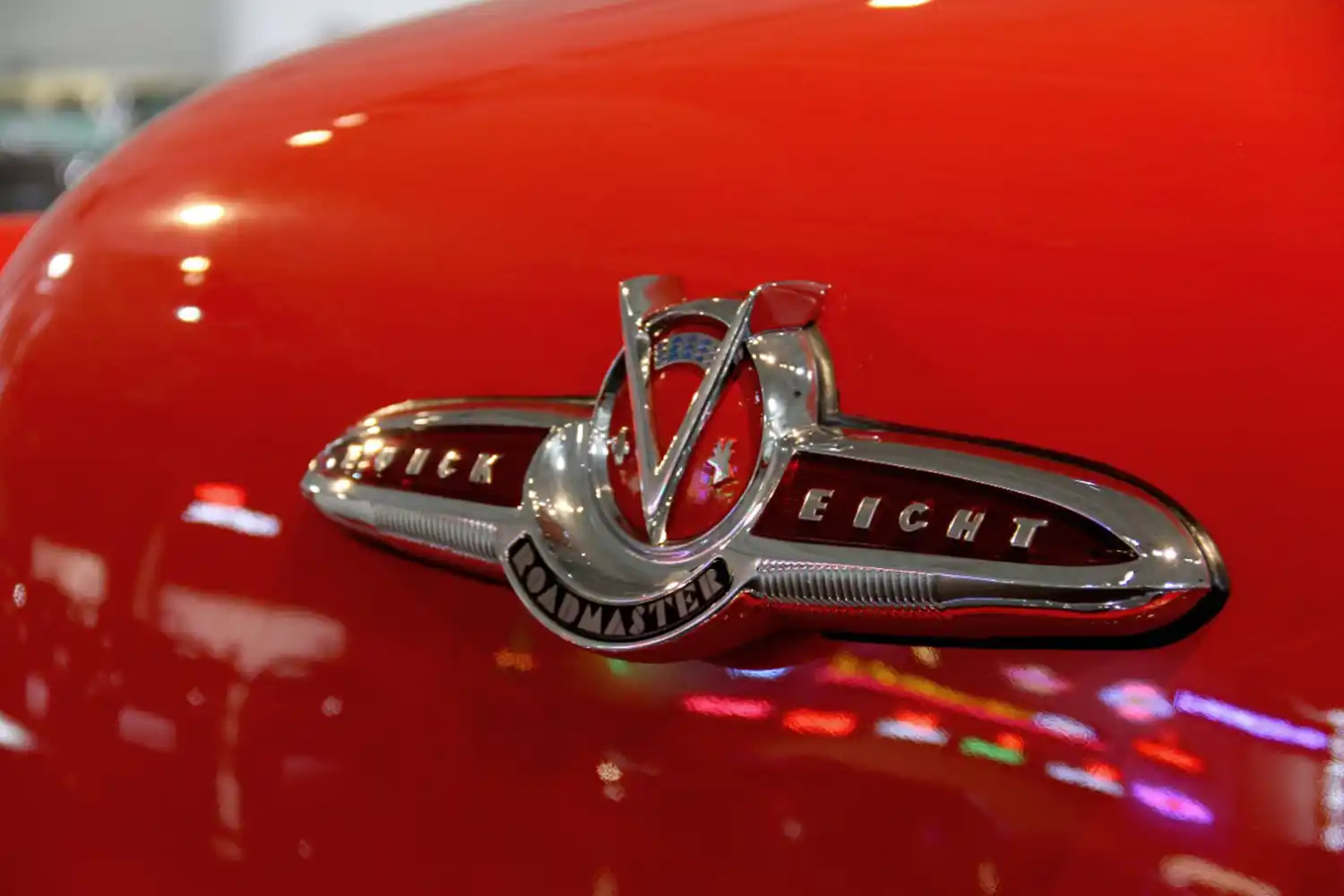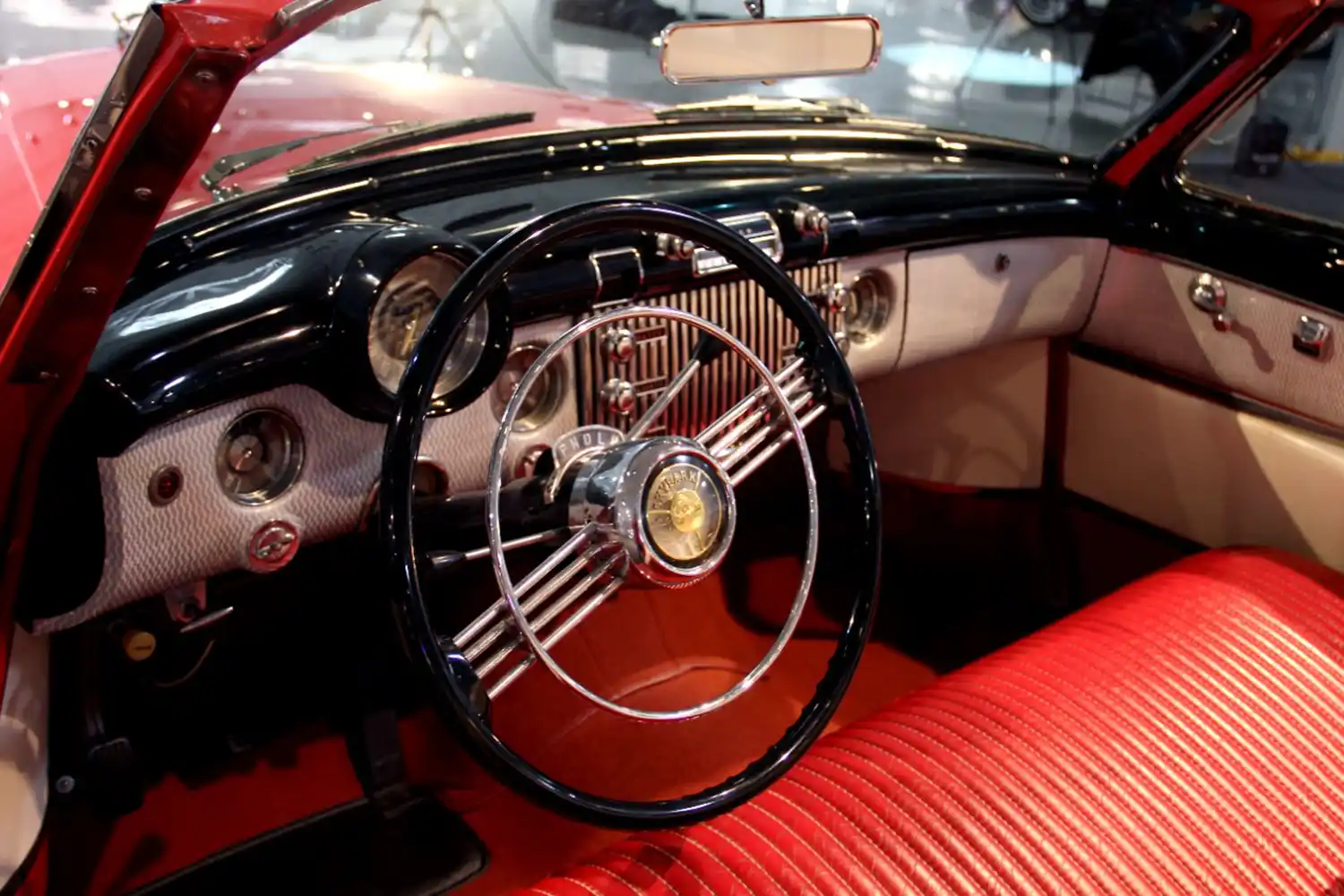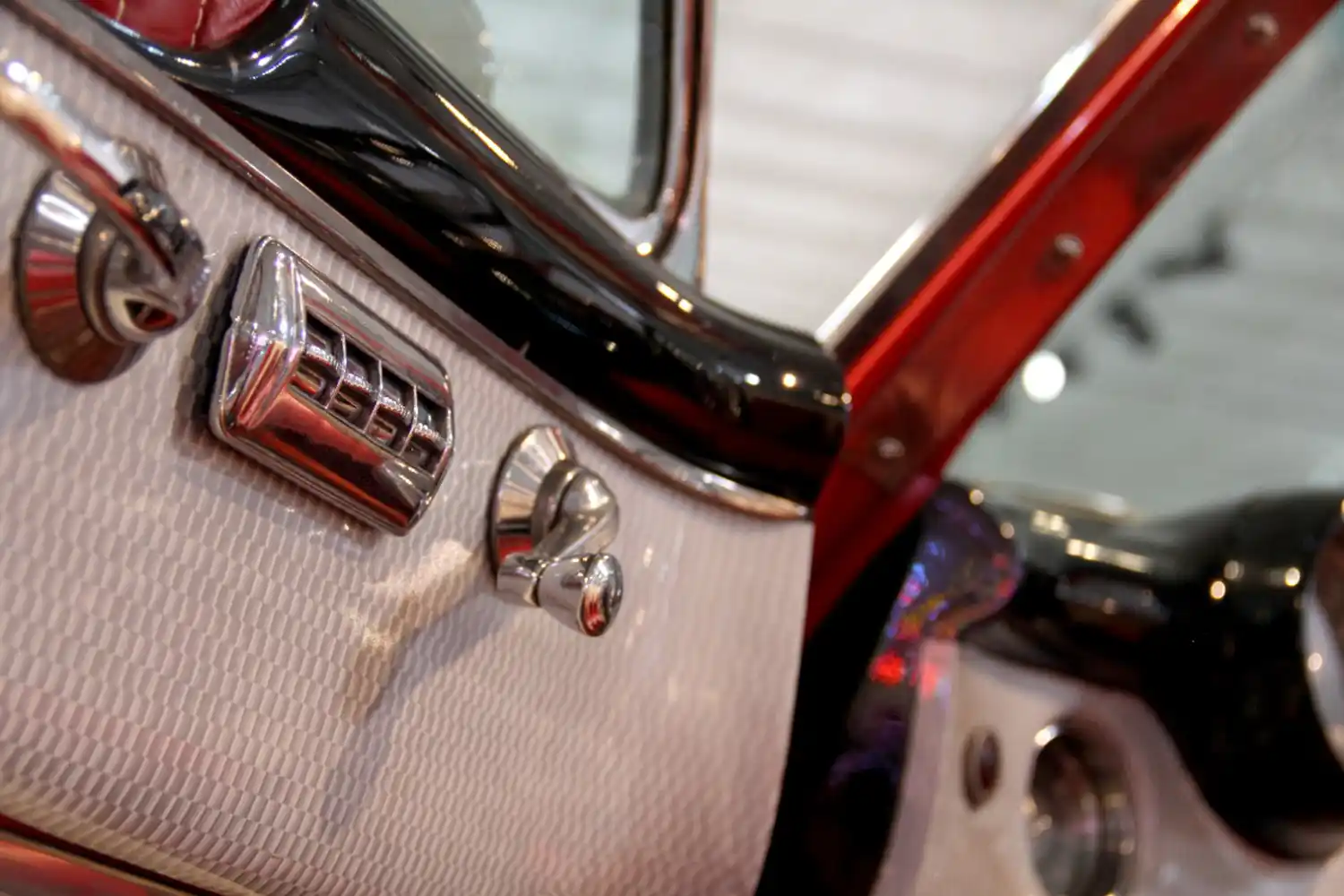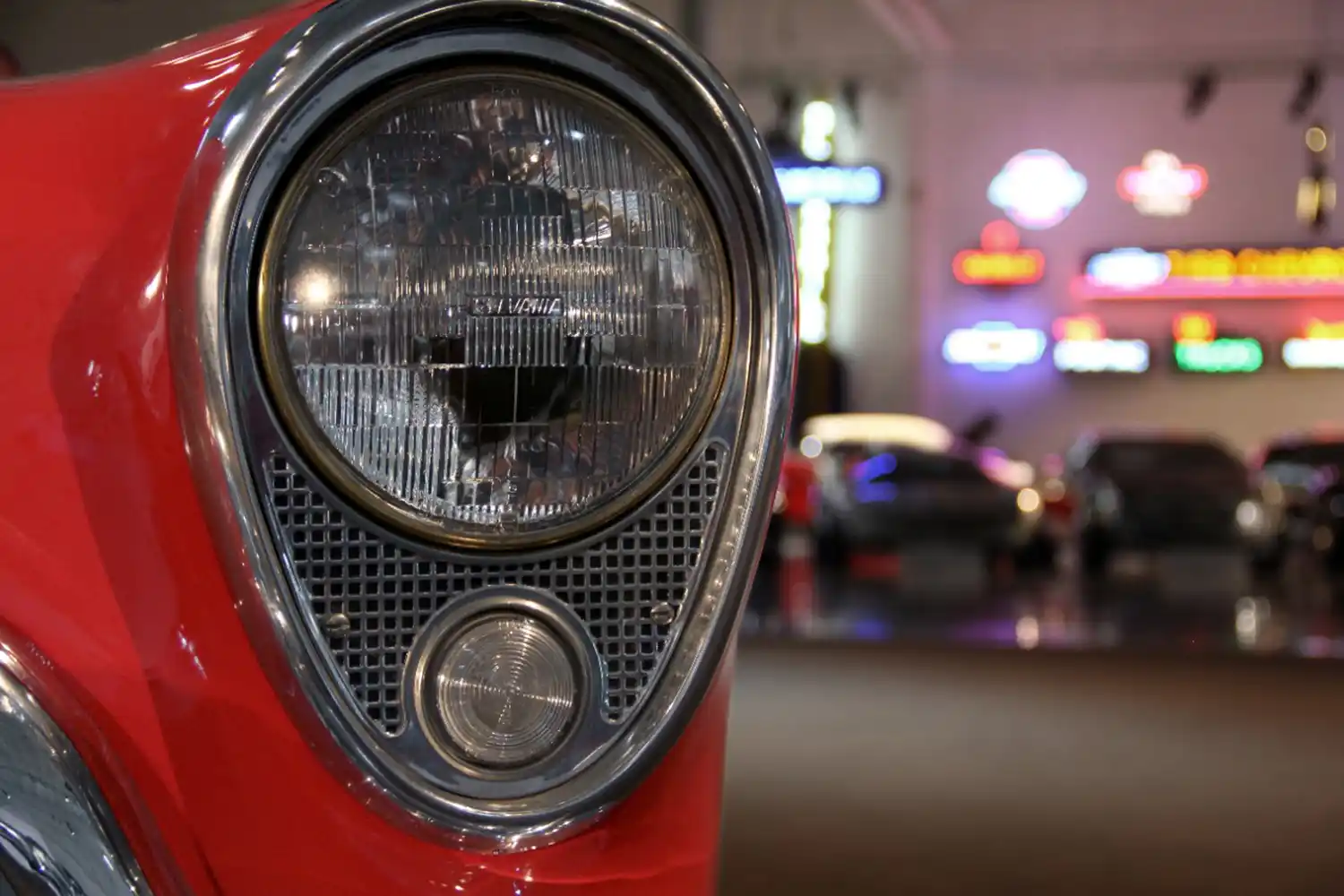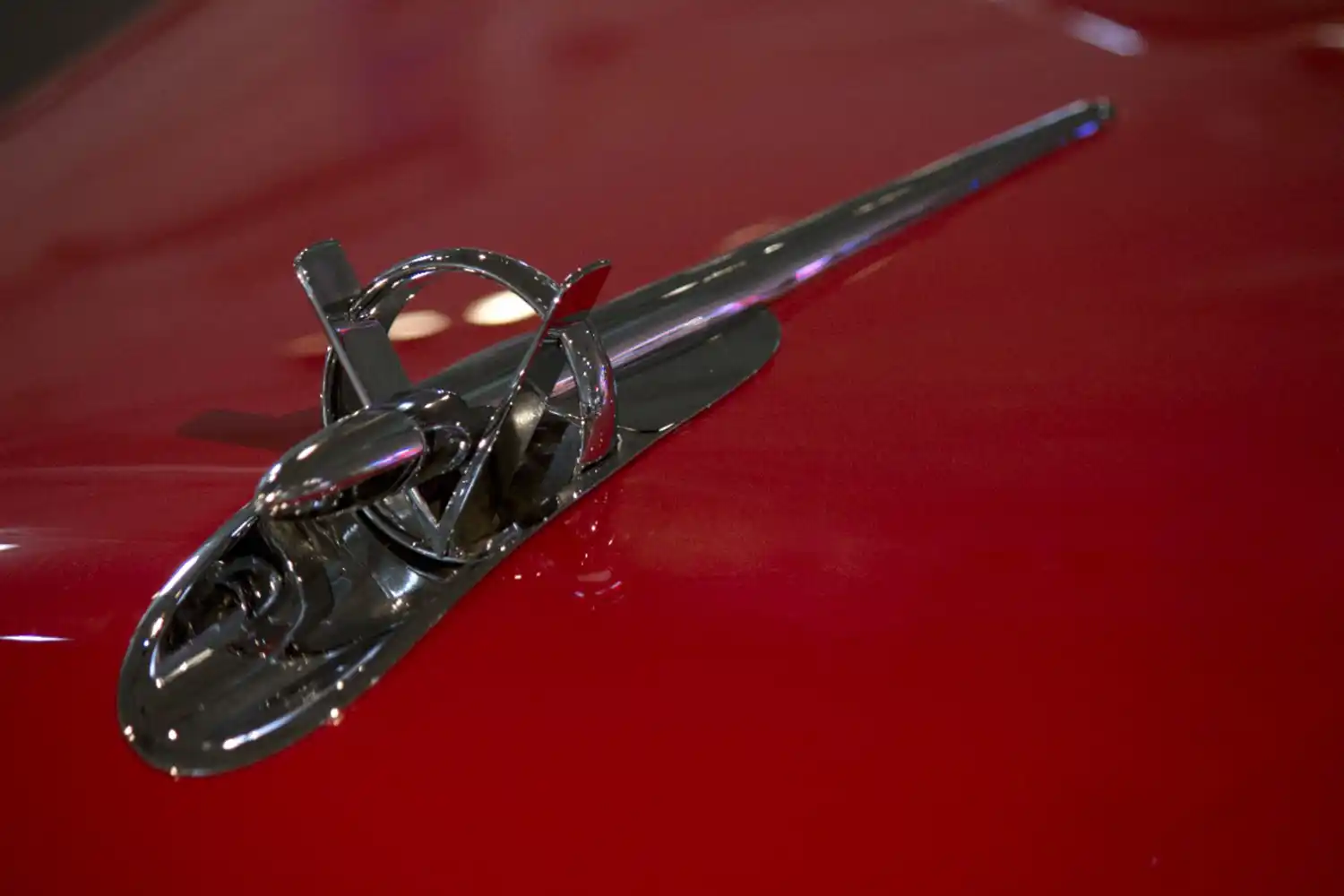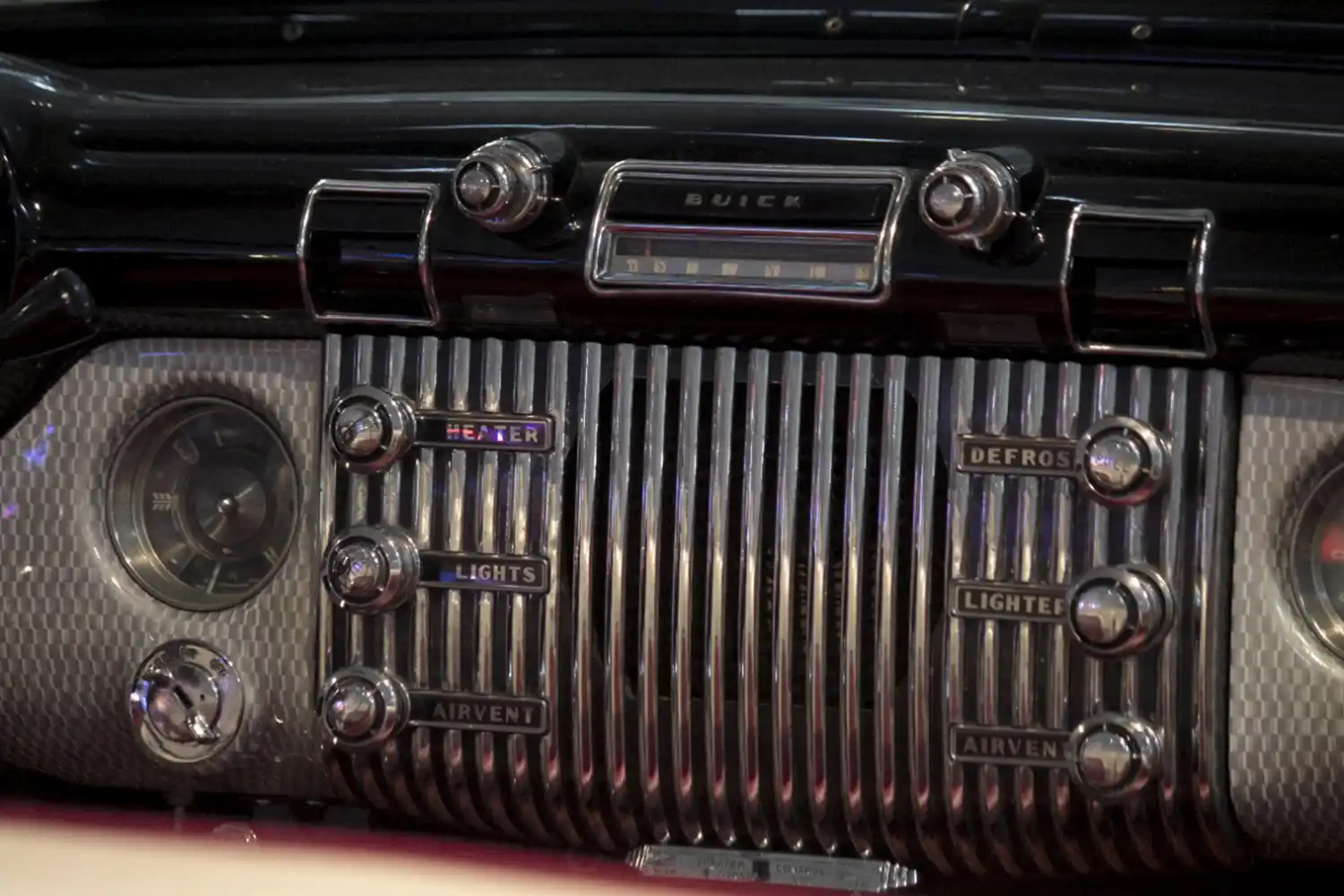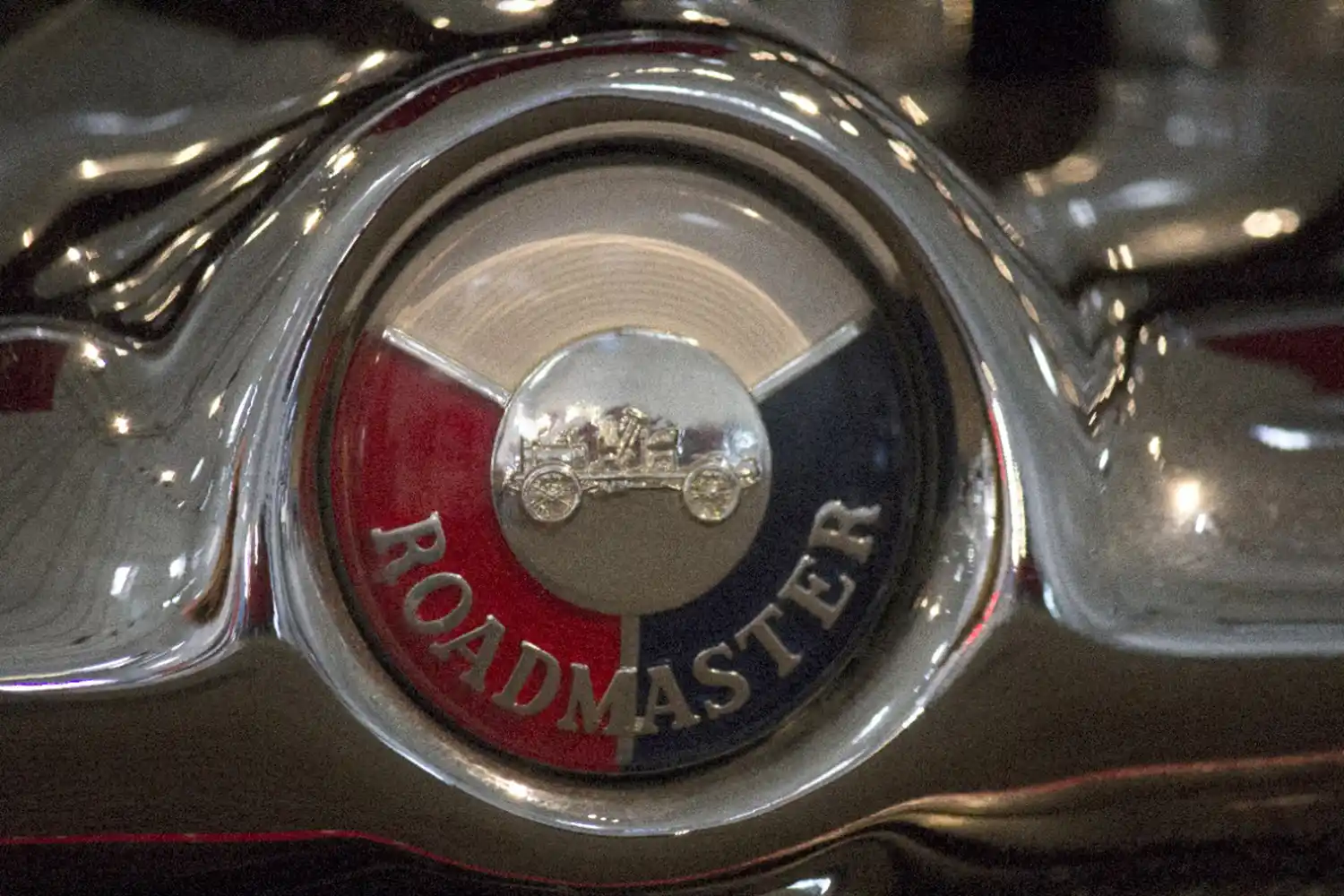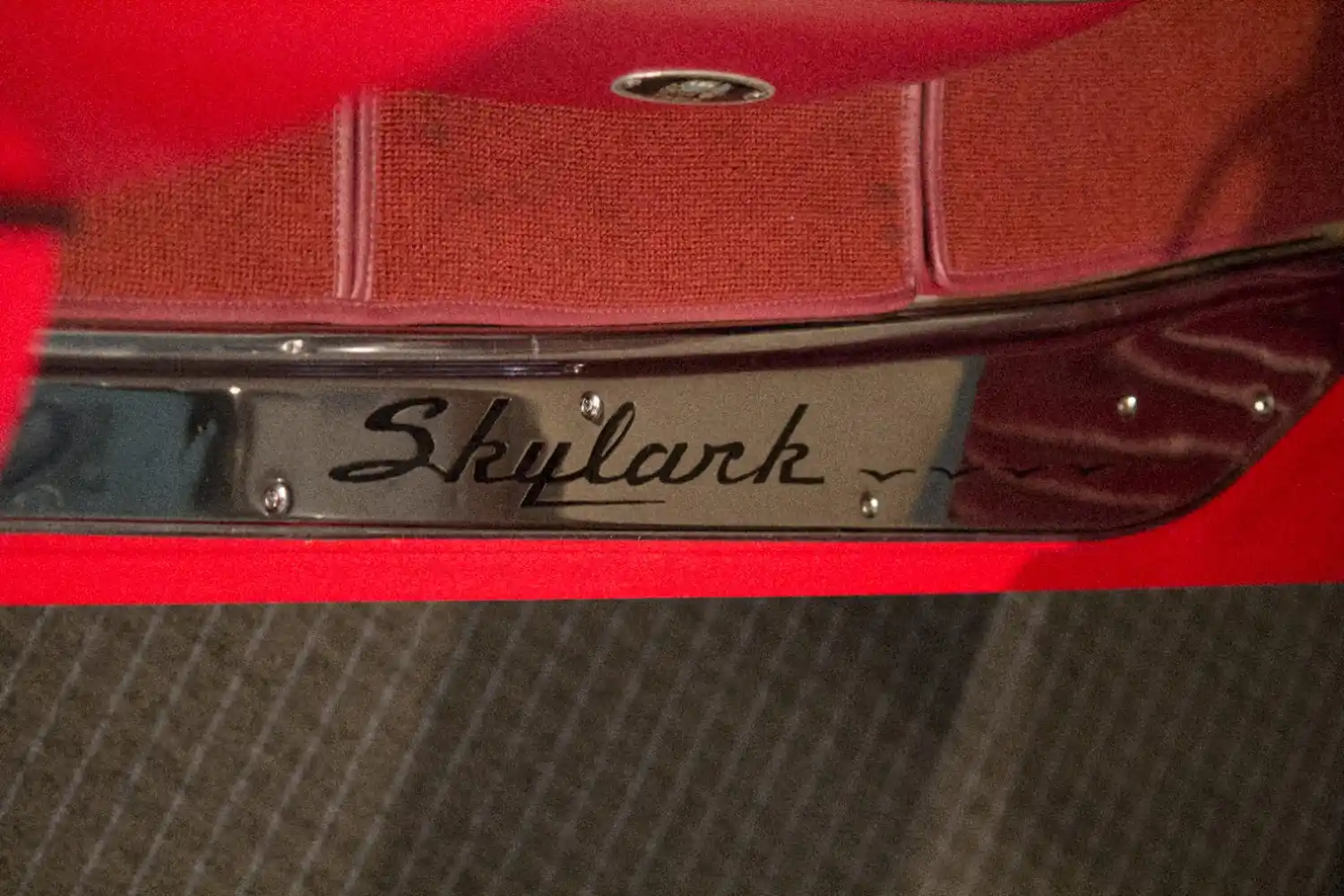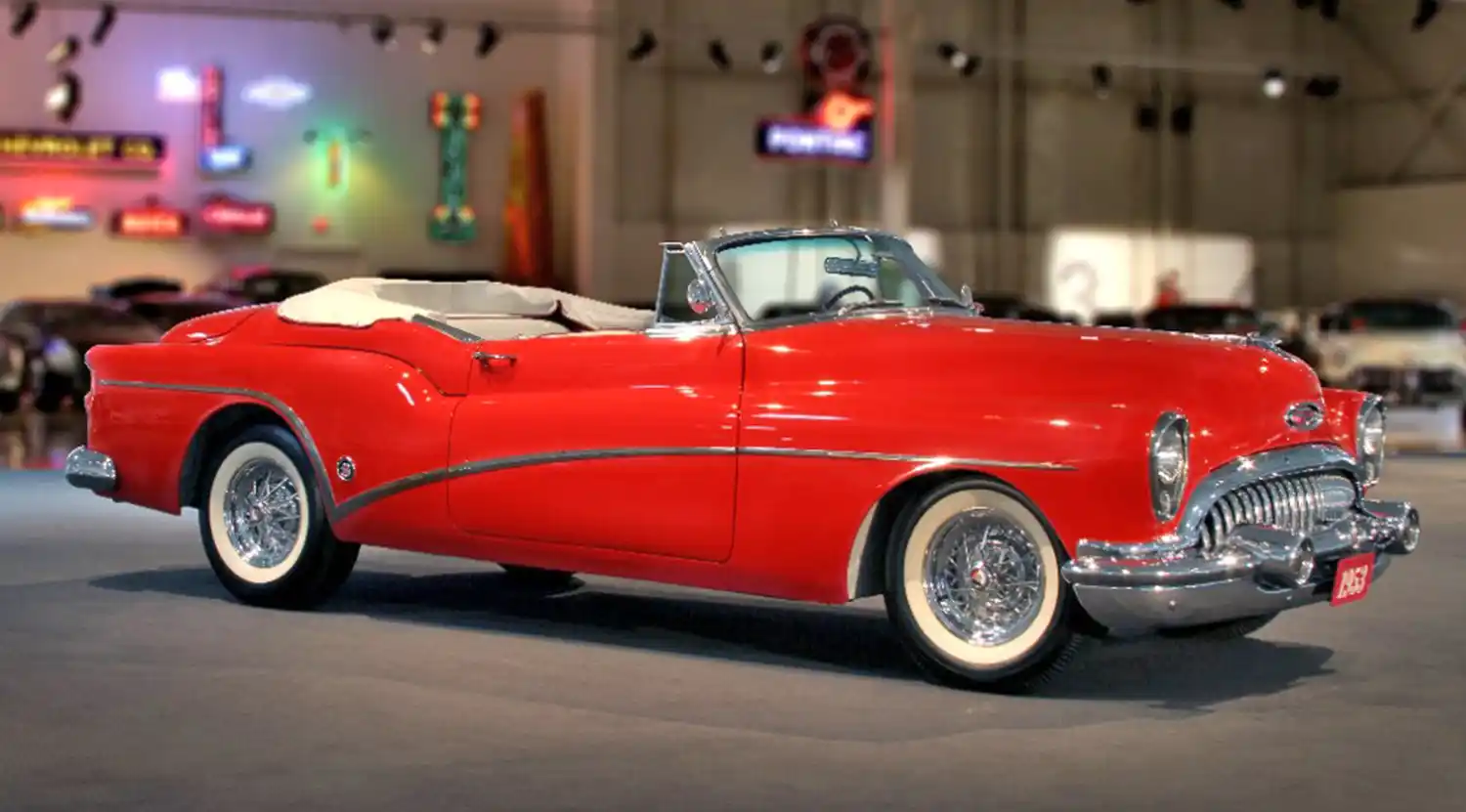
Introduced to mark Buick’s 50th anniversary, the Buick Skylark (first use of the name for a production vehicle) on one of three specialty convertibles produced in 1953 by General Motors; the other two were the Oldsmobile Fiesta and the Cadillac Eldorado. All three were limited production vehicles promoting General Motors’ design leadership. Of the three, the Skylark had the most successful production run with 1,690 produced. This was considered quite an amazing sales feat, for the car had a list price in 1953 of slightly in excess of US$5,000. However, many languished in dealer showrooms and were sold at discount.
All 1,069 regular-production Skylarks built in 1953 (and all in 1954) were convertibles. The 1953s were based on the 2-door Roadmaster, having identical dimensions (except height), almost identical convenience and appearance equipment, and a Roadmaster drive train. In 1953, the model designation for the Skylark was 76X, while the model designation for the Roadmaster convertible was 76R. The few options available to the Roadmaster convertible buyer were standard equipment to the Skylark buyer, albeit the base price for the well-equipped Roadmaster convertible was only about US$3,200.
The 1953 Skylark featured V8 power and a 12 volt electrical system, both a first for Buick, as well as full-cutout wheel openings, a styling cue that would make its way to the main 1954 Buick line. Also making its way into the 1954 Buick line was the cut-down door at the base of the side window line that bounced back up to trace around the rear window (or convertible top). This styling clue stayed with Buick for many years and can be found on any number of automobile brands to this day.
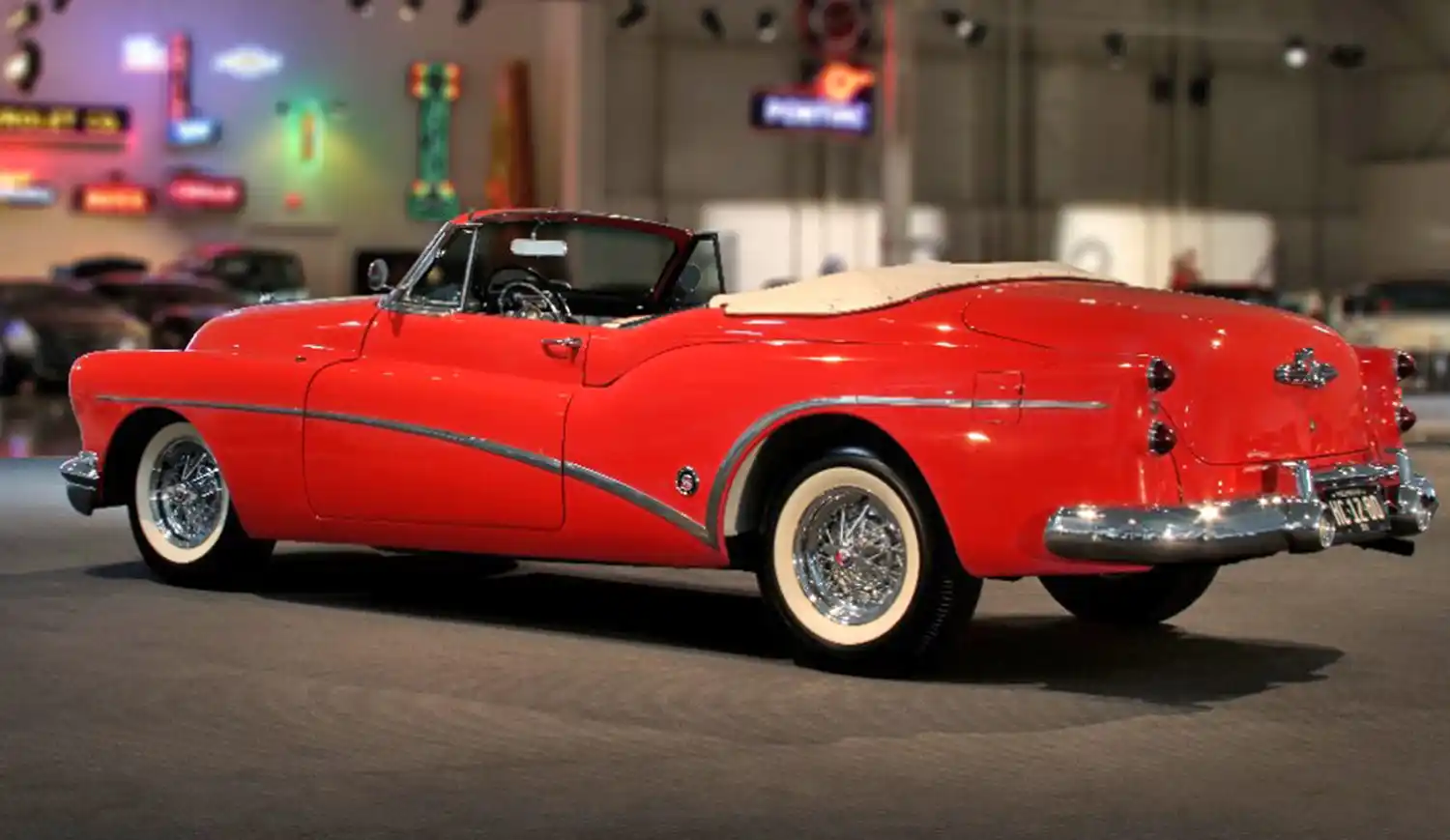
The 1953 Buick Skylark convertible was the centerpiece of Buick’s 50th Anniversary. The Skylark came with standard equipment beyond anything previously offered by Buick. Based on the premium-series Buick Roadmaster chassis, the Skylark had a look all of its own.
The Kelsey-Hayes 40-spoke chrome wheels are acknowledged by collectors as among the most beautiful wheels to ever grace a production car. Powered by Buick’s first modern V8 engine, this car’s performance matched its racy appearance. Sales in 1953 totaled just 1,640 units, making the Skylark a rare and collectible car.
The 1953 Buick Skylark was a handmade car in many respects. The stampings for the hood, trunk lid and a portion of the convertible tub were the same as the 1953 Roadmaster convertible (and Super convertible, model 56R). The stampings for the front fenders, rear fenders, the outer doors, and a portion of the convertible tub were unique to the Skylark. All Skylark convertible tubs were finished with various amounts of lead filler. It is not unusual to find a substantial amount of lead filler just behind the doors near the bottom of the window line. The inner doors of the Skylark were made from the inner doors of the 2-door Roadmaster and Super by cutting the stamping in half approximately parallel with the ground and then welding the two pieces back together in a jig at an angle that produced the necessary door dip (see photos of finished car).
Although there were many unique design features of the 1953 Skylark, one that goes almost unnoticed today is that the top and seating of the car were lowered a few inches below the Roadmaster and Super convertibles. This was achieved not by changing the frame, body or suspension, but by cutting the windshield almost three inches shorter and lowering the side windows and convertible top frame. To accommodate people without bumping their heads with the top up, the seat frames and steering column were lowered.
The wheels of the 1953 Skylark were true wire wheels, produced by Kelsey-Hayes, with everything chromed save for the plated and painted “Skylark” center emblem. Although this was high style in 1953, the wheels were heavier than the regular steel wheels, would require periodic truing to keep them straight and balanced, and required tubes within the tires just when tubeless tires were becoming the norm, as they were throughout the rest of the Buick line.
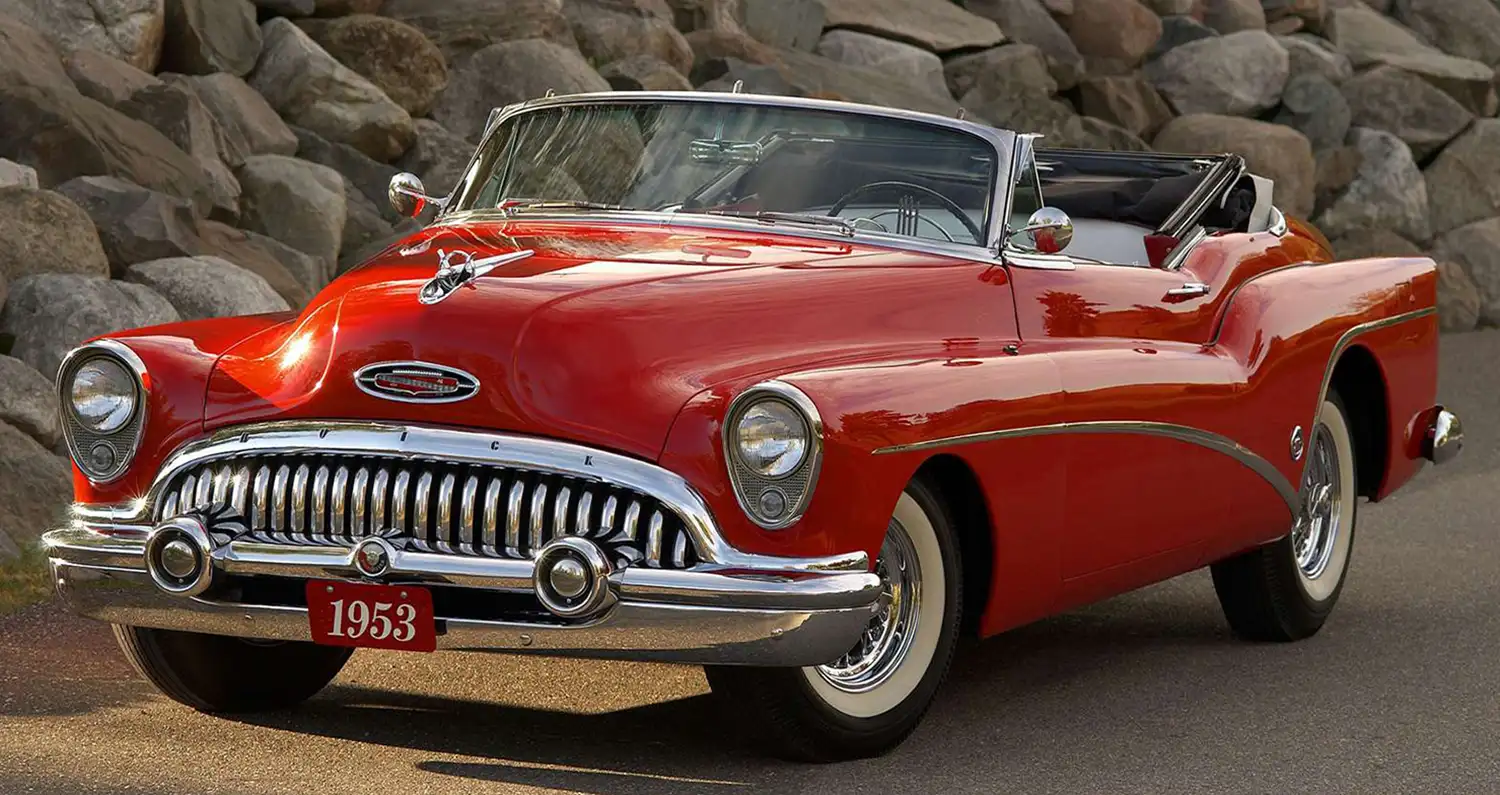
For 1954, the Skylark returned, although radically restyled. This Skylark featured elongated wheel cutouts, the interior of which were available painted a contrasting color to the body color. For example, black cars could receive white or red wheel wells. The trunk of the restyled Skylark was sloped into a semi-barrel shape. Tail lights were housed in large chromed fins that projected from the tops of the rear fenders.
The car was now based on the all-new shorter Century/Special chassis and not the top-of-the-line Roadmaster/Super chassis, also all-new for 1954. However, it did share the Roadmaster and Century powertrain, the highest output in the 1954 Buick model lineup. This powertrain was an evolutionary improvement, but very similar to the 1953 powertrain.
The model designation for the 1954 Buick Skylark was “100”, a completely unique designation. The short wheelbase cars were the Buick Special: series 40, the Buick Century: series 60, and the Buick Skylark: series 100, albeit a series of just one model. All production Buick Skylarks were built as 2-door convertibles. They had the same luxury equipment as the 1953 Buick Skylarks.
Like their 1953 counterparts, the 1954 Skylark had a number of unique sheetmetal stampings, but without the hand labor that went into the 1953 Skylark production. In addition to unique front and rear fenders with the elongated wheel cutouts, the 1954 Skylark had a unique trunk with its semi-barrel shape and huge, rounded chrome fins. Interestingly, the hood was also unique to the 1954 Skylark in a small way. The hood ornament was quite different from all other Buick models for the 1954 model year. However, this same hood ornament, although unique in size to just this one model in 1954, was to portend the design of the 1955 Buick hood ornament used on all models of that year.
The cost of the Skylark, mixed with the public’s dislike for the restyle and its perceived step down in rank to the Special/Century series versus the 1953 rank with the Super/Roadmaster series resulted in poor sales and the car’s demise at the end of the 1954 model year.
Engines: 322 in³ (5.3 L) V8
Source: Wikipedia (GNU Free Documentation License)

